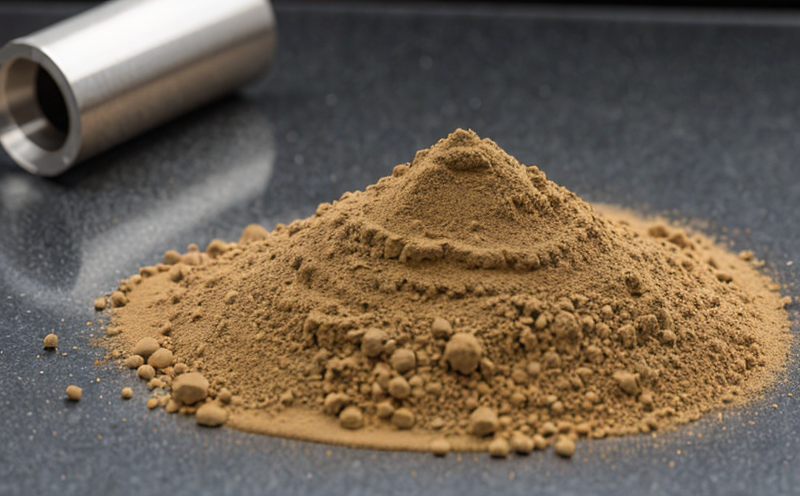ISO 14855 Biodegradability Testing of Raw Materials
The ISO 14855:2017 standard provides a method for determining the biodegradability of plastics and other materials under defined aerobic conditions. This service is particularly relevant for additive manufacturing (AM) and 3D printing sectors, where raw material selection can significantly impact part quality, sustainability, and end-of-life disposal options.
Biodegradability testing helps ensure that the raw materials used in AM processes are environmentally friendly and meet regulatory standards. This is crucial as consumers increasingly demand more sustainable products and governments implement stricter environmental regulations. The test measures how quickly a material decomposes into biomass, carbon dioxide, and water under controlled conditions.
The protocol involves exposing the test specimen to a biodegradation medium containing microorganisms capable of breaking down the polymer chains in the raw material. Over time, the reduction in mass or increase in CO2 production indicates the extent of biodegradation. The results are compared against defined thresholds to determine compliance with ISO 14855:2017.
For additive manufacturing applications, this testing is essential for several reasons:
- Sustainability: Ensures that raw materials do not persist in the environment after use.
- Regulatory Compliance: Meets international standards and helps avoid potential legal issues.
- R&D Optimization: Identifies suitable biodegradable options for new product development.
- Supply Chain Management: Ensures suppliers meet environmental criteria, enhancing overall sustainability efforts.
The testing process typically includes careful specimen preparation to ensure accurate results. This involves cutting the raw material into standard-sized pieces and conditioning them under specified humidity and temperature conditions before exposure to the biodegradation medium. The use of standardized apparatus ensures consistency across tests, which is critical for accurate interpretation.
Accurate reporting is essential in this testing process. Reports typically include detailed descriptions of the test method, specimen preparation, incubation periods, observed changes in mass or CO2 production, and comparisons against ISO 14855:2017 criteria. Compliance with these standards provides confidence that raw materials are suitable for use in environmentally responsible additive manufacturing processes.
Understanding the biodegradability of raw materials is vital for the additive manufacturing sector to innovate sustainably. By ensuring compliance with ISO 14855:2017, laboratories can support industries in meeting their environmental goals and regulatory requirements effectively.
Applied Standards
The primary standard applied for this service is ISO 14855:2017. This international standard specifies the procedure for determining the biodegradability of plastics and other materials under defined aerobic conditions. Compliance with these standards ensures that testing methods are consistent and reliable across different laboratories.
ISO 14855:2017 provides specific guidelines on specimen preparation, incubation periods, and data analysis to ensure accurate biodegradability measurements. The standard also emphasizes the importance of using appropriate control materials to validate results consistently.
In addition to ISO 14855:2017, other relevant international standards include ASTM D6954-14, which covers similar testing for plastic raw materials. These standards are widely recognized and accepted by regulatory bodies, ensuring that the results of biodegradability tests are internationally comparable.
Adherence to these standards not only enhances the credibility of the test results but also supports the development of more sustainable products in the additive manufacturing sector. By ensuring compliance with global benchmarks, laboratories can contribute significantly to environmental protection and sustainability initiatives.
Scope and Methodology
The scope of this service encompasses a comprehensive biodegradability assessment for raw materials used in additive manufacturing processes. The methodology involves several key steps:
- Specimen Preparation: Raw materials are cut into standard-sized pieces and conditioned under specified humidity and temperature conditions.
- Incubation: Specimens are exposed to a biodegradation medium containing microorganisms capable of breaking down the polymer chains in the raw material.
- Data Collection: Mass changes or CO2 production levels are monitored over defined time periods.
- Analysis and Reporting: Results are compared against ISO 14855:2017 criteria, providing detailed reports on the biodegradability of the raw materials.
The methodology is designed to ensure that tests are conducted in a controlled manner, allowing for accurate and reliable results. This approach helps manufacturers make informed decisions about their raw material choices, ensuring they meet environmental standards while maintaining product quality.
By following these rigorous testing protocols, laboratories can provide clients with confidence that the raw materials used in additive manufacturing processes are biodegradable and sustainable. This not only supports compliance with international regulations but also enhances the reputation of manufacturers as leaders in environmentally responsible practices.
International Acceptance and Recognition
The ISO 14855:2017 biodegradability test is widely recognized and accepted by regulatory bodies, industry associations, and environmental groups worldwide. Its international acceptance ensures that the results of these tests are valid across different regions and countries.
Many jurisdictions have implemented regulations requiring manufacturers to demonstrate compliance with ISO 14855:2017 standards as part of their sustainability commitments. For instance, some European Union directives mandate biodegradability testing for certain materials used in packaging and other applications. Similarly, the United States Environmental Protection Agency (EPA) has recognized this standard as a key indicator of environmental responsibility.
By adhering to ISO 14855:2017, laboratories can ensure that their clients’ raw materials meet these regulatory requirements, thereby reducing compliance risks and enhancing the overall reputation of the client’s products. This recognition also opens up new markets for sustainable products, as consumers increasingly favor brands committed to environmental stewardship.
The international acceptance of this standard underscores its importance in shaping future sustainability practices within the additive manufacturing sector. As more industries adopt biodegradable materials, compliance with ISO 14855:2017 will become an essential part of product development and marketing strategies.





